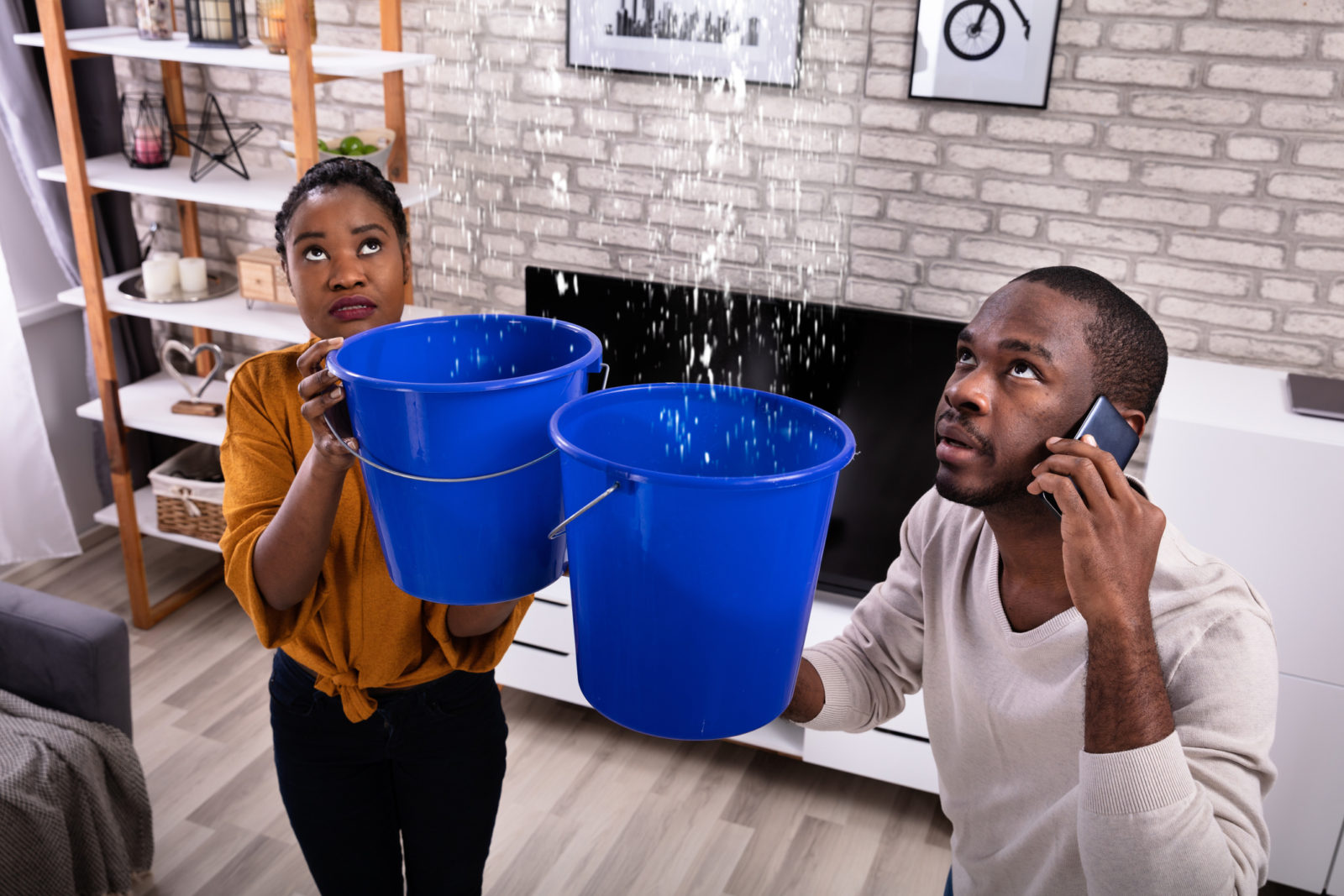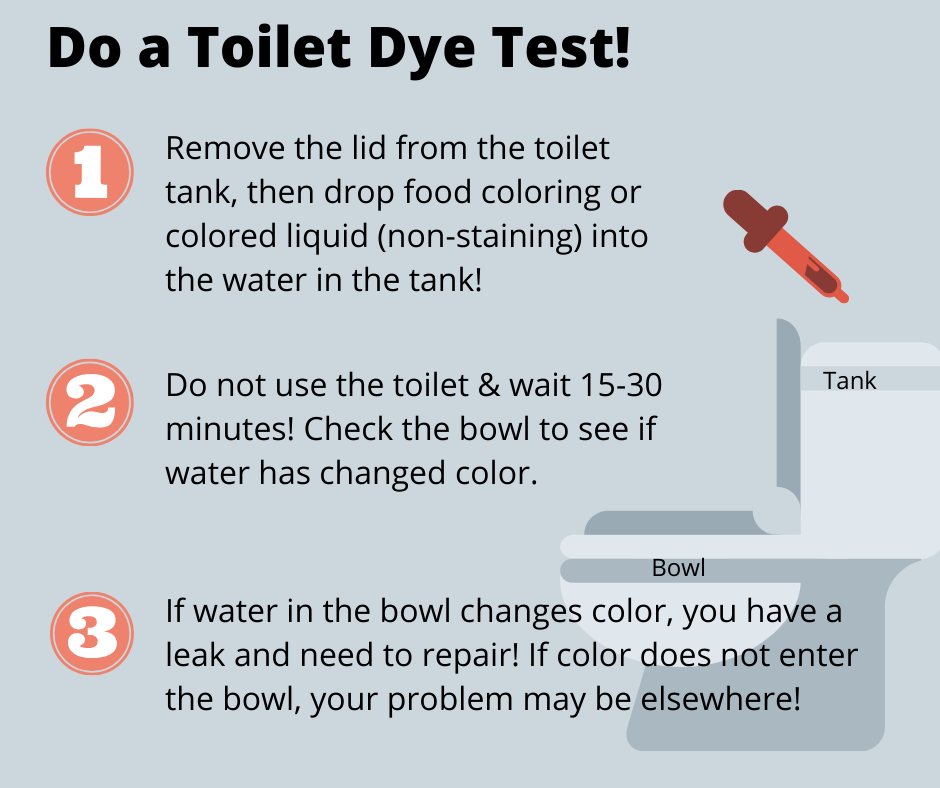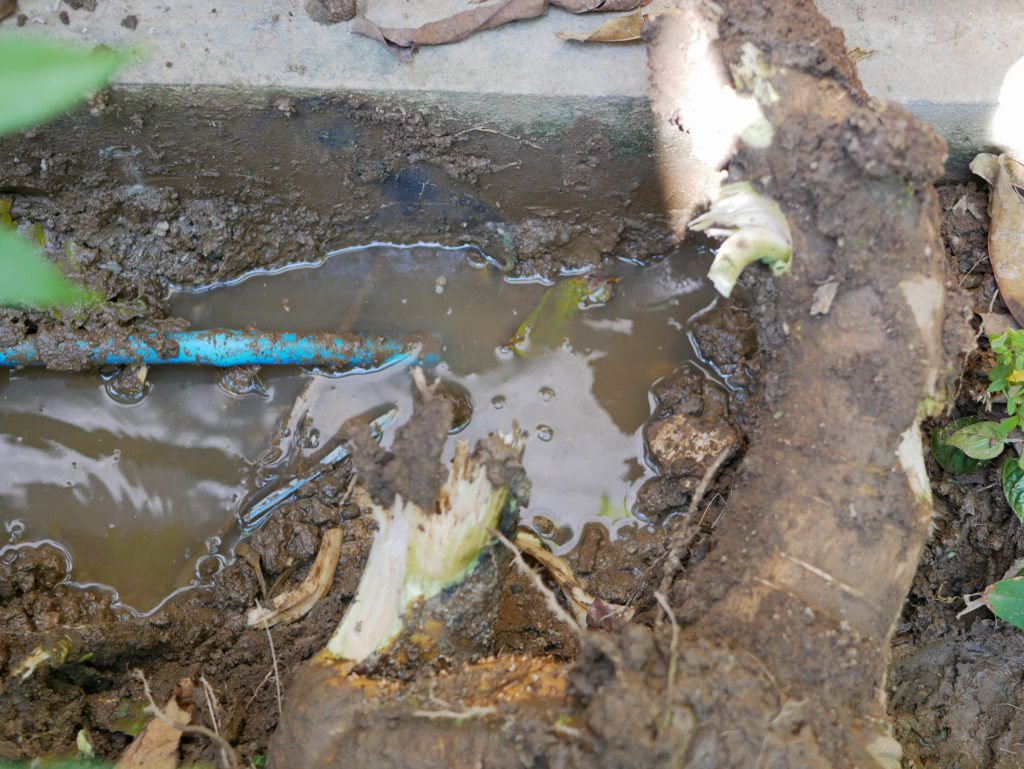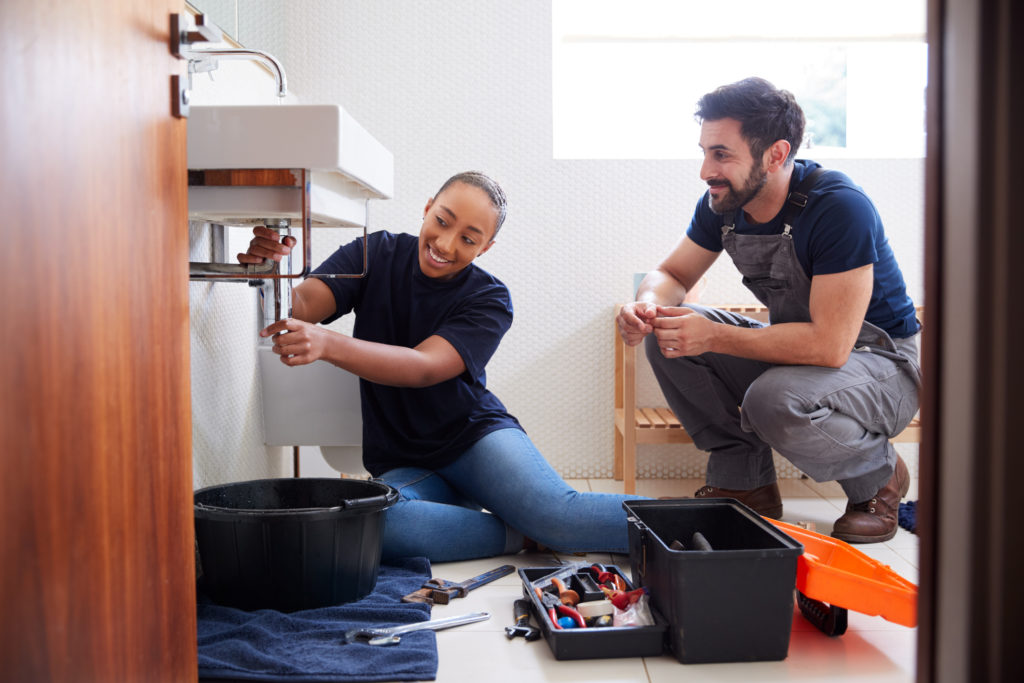High Water Bill? Flooding? Leaks? Service Issue Questions? Start Here
 September 24, 2020
September 24, 2020LCA frequently receives water service questions related to interior plumbing problems. Sometimes, customers are calling about a leak inside a residence; other times, customers are calling because they see water pooling on a driveway or in the grass. We’ve even had calls from customers concerned about floodwaters that have entered their home during a storm. If you have water problems, here’s where to start.
Customer Responsibilities
For your water service, there is a service line that goes from the water main in the street to a valve to turn water on or off to your house, called the curb box. The service line connected from the curb box into your home is the responsibility of the property owner. LCA’s responsibility is from the water main in the street up to that curb box.
The customer’s responsibility is from the curb box into the house (see an illustration at the customer responsibilities link, below) . The only thing inside the house that LCA is responsible for is the water meter — but the customer is responsible for protecting the meter from freezing or other damage.
On the wastewater side, a service line connects your home plumbing to the main sewer line in the street. Customers are responsible for the entire sewer service line, from the connection point in the street into the house. Check out our graphics that show customer responsibilities for your division.
Issues With Flooding

When it comes to water problems such as flooding, if there’s water entering your home, here are a few things to check:
- Are your gutters clogged? Debris can block them, causing water to spill over the sides and damage your home or seep into your basement.
- Are your downspouts directed 5 to 10 feet away from your house?
- Does water flow away from your house, or toward it? If it’s flowing toward your house, changes need to be made to your landscaping.
- If you live in a flood-prone area, look into purchasing a flood insurance policy so that you have some protection if there’s a water problem. Flood damage is typically not covered by a standard homeowner’s insurance policy.
By the way, turning your water service off when flooding happens will not stop groundwater from rising, but we have had customers ask us to come out to turn their water service off!
Avoid Excess Fees
If LCA is called out to address an issue determined to be the customer’s responsibility — for instance, a water problem such as a leak inside the house — a $50 Site Visit Fee will apply ($150 for after-hours calls). In the event of a leak, the volume of water passing through the meter is still how the customer is billed. Water provided by LCA costs the same to produce, even when it is lost in a leak.
To help you troubleshoot issues and avoid excess fees, here are a few things to check before calling LCA.
High Water Bill
If you have a high water / sewer bill, and the bill indicates the meter reading is an “Actual” reading, that means the volume of water you were billed for was accurately measured by your water meter. Here’s what you can do to troubleshoot the issue.
First things first: Check your water usage over the billing period in question.
- Was it during some of the summer months, when you were watering your lawn frequently or filling a swimming pool?
- Is it possible you left a soaker hose running in the garden for a significant period of time?
- Does the bill include dates when you had extra house guests for an extended period of time?
- Did you have any plumbing work done over the billing period?
- Do you remember any other plumbing issues that you resolved during this time, such as a water softener cycling too often or a toilet flapper that needed to be replaced? Any of those could have caused the water problem.
- Do you have a filter or other treatment device anywhere in your home? Check it to make sure it is working properly.
Look for Leaks
Now it’s on to Step 2: Check for obvious leaks. Even a little leak can add up to a big waste: A shower that leaks 10 drips a minute wastes more than 500 gallons a year. And a drippy faucet can send more than 3,000 gallons a year down the drain. The good news is, it’s usually simple to fix leaks. Better yet, fixing these water problems will pay for itself in savings.
One not-so-obvious place where leaks may lurk is your toilet tank. Toilets with a bad flapper can be a silent leak and one of the biggest culprits of water loss.

It’s easy to test, though: Just put a few drops of dark food coloring — blue or green work best — in the tank (not the bowl!), then wait about 15-30 minutes without flushing.
If the dye appears in the bowl, you’ve got a leaky flapper that needs to be replaced. Just like belts and hoses for your automobiles, flappers can deteriorate over time and not seal well.
Not sure if you’re losing water, or where a leak is coming from? Here are some helpful hints from the EPA to solve water problems:
- Take a look at your water usage during a colder month, such as January or February. If a family of four exceeds 12,000 gallons per month, there are serious leaks.
- Check your water meter before and after a two-hour period when no water is being used. If the meter changes at all, you probably have a leak. A good time to monitor is during overnight hours when everyone is sleeping and water is not being used. Check the meter reading at night before bed, then again in the morning. If there is significant use recorded, you probably have a leak somewhere. (For digital meters, simply use a bright flashlight — LED lights work best — to activate the panel to take a reading. Some cell phone flashlights work just fine, but some will not.)
- Examine faucet gaskets and pipe fittings for any water on the outside of the pipe to check for surface leaks.
Wastewater Problems

If you have a sewer backup and LCA is your sewer service provider, we may be able to help, but we are not responsible for unclogging customer service lines or interior plumbing.
You can check your sewer cleanout box to see if wastewater is flowing normally. If so, the backup is an interior issue and you’ll need to call a plumber. Installation of a check valve on the service line may help mitigate sewer backups.
You should also consider removal of trees to avoid tree root growth over any of your service lines. Roots can break and penetrate water and wastewater lines, as in the picture at left.
Avoid flushing larger items such as diapers, wipes, food, sanitary napkins, grease, etc. And while we’re talking about what not to flush, please don’t flush expired or unused medications, either. Instead, find an approved disposal location online.
Grinder Pump Issues
If your property has an E/One grinder pump, there are occasions when an alarm may sound, and it is important to know the proper steps to take. Please refer to this information guide for helpful instructions: E-One Grinder Pump User Guide
Contact Us
If there are no obvious leaks, and no obvious answers, it’s on to Step 3: Contact our Customer Care team (of course, you can contact our Customer Care team at any time). They can provide information and additional troubleshooting tips. You can also read our customer troubleshooting guide for more information.

Call a Plumber
If you still aren’t able to determine the cause, it’s time for Step 4: Hire a plumber. Customers are responsible for internal plumbing, and a plumber will help determine if there’s a leak somewhere in the house.
Know How to Shut Off Water
It is very important that everyone in your household knows where the main water shutoff is located inside your home in the event of an emergency. You never know when you may need to quickly turn off the water supply due to a burst pipe or other plumbing problem.
What’s Your Water Footprint?
Finally, if your water bills are consistently high, it might be time to reevaluate your usage. You can start by checking your water footprint — use the worksheet included in the customer troubleshooting guide, or use a water footprint calculator.